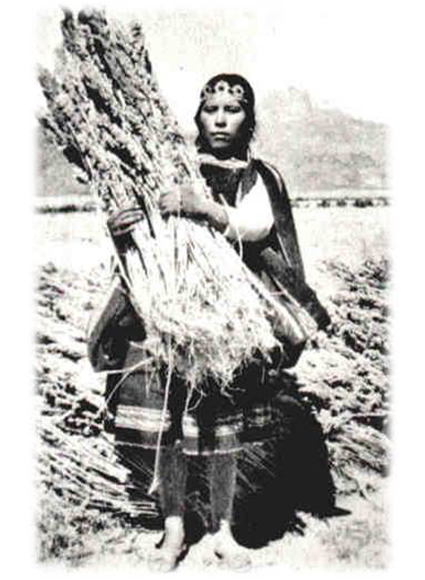History

Background
The National Association of Quinoa Producers - ANAPQUI, is a Social Productive Organization that was born on December 3, 1983, its productive base is distributed in the Intersalar Region of the Southern Highlands of Bolivia, the agricultural activity is monoculture QUINOA, this is due to the arid and dry soil because other crops are not adapted as in other areas of the National Territory. Another activity that accompanies this crop is the breeding of Llamas in regions where there are highlands that provides fodder for this livestock.
Characteristics of the Society
Anapqui is projected as an agro-industrial company specialized in the Quinoa production complex, from the seed to the final product. For this reason, within its general objectives described in the Institutional Strategic Plan 2019-2023, it has established to grow productively and commercially in the national and export market, the final beneficiaries are more than 25 thousand farming families.
Essentially in three sustainable strategic lines:
- Social component: 38 years ago Anapqui was born by the imperative need to get market for the production of Quinoa, when at that time the barter of 2 QQ. Of Quinoa for 1 QQ of rice was practiced precisely to the Quinoa considered as food of the Indians and it was not known in other areas of the market.
- Ecological component: The Organization has considered this component essential to ensure long-term sustainability and environmental care throughout the agricultural cycle of Quinoa, the rotation of mantles, soil, use of natural fertilizer and pest control without the use of agrochemicals are the characteristic of the agricultural work in the plots.
- Economic component: This component is the one that benefits the producer for the effort during each agricultural cycle, the market for Quinoa was complicated at the beginning and later had acceptance in the foreign market. However, over the years, the neighboring country of PERU boosted Quinoa production and today more than 86 countries produce their own Quinoa.


Market Share of the Quinoa Sector:
After the unfortunate years of the growing bubble in the world overproduction of Quinoa, Anapqui is solidly projected to establish itself as one of the safest companies in providing healthy food of high quality to domestic and foreign consumers, Anapqui has raw material produced by themselves with a traceability that guarantees the non-use of agrochemicals during agricultural work.Reason for which it bets to this challenge to expand in all the segments of market offering innocuous product of very High Quality in the Food Sovereignty of the Country.
Objectives
Our objectives are very clear:
- Exports: Anapqui has more than 13 clients abroad, with the main market in EUROPE, followed by the USA and ASIA. However, in the ranking of Bolivian exporters, Anapqui is in 6th place, basically due to its limited processing capacity of only 12 containers per month. With the project we intend to expand up to 35 processing containers per month (70% participation).
- Subsidy Market - SEDEM: 5 years ago, Anapqui was the only supplier of Quinoa to the National Subsidy market, reaching up to 8 containers per month (Grain, Flour and Flakes), at present we deliver 2.5. Containers per month because we are more than 30 Quinoa Suppliers in each annual Package. The idea is to grow with volumes of finished products, for which the project will provide a solution in terms of production and supply capacity (20% participation).
- National market for finished products: This market is new for Anapqui; it has only been participating in the market for a couple of years with Quinoa-derived products (pasta, cereals, precooked flour, and others). The intention is to take advantage of the gaps in this market with greater production capacity (10% participation).
After the unfortunate years of the growing bubble in the world overproduction of Quinoa, Anapqui is solidly projected to establish itself as one of the safest companies in providing healthy food of high quality to domestic and foreign consumers, Anapqui has raw material produced by themselves with a traceability that guarantees the non-use of agrochemicals during agricultural work.Reason for which it bets to this challenge to expand in all the segments of market offering innocuous product of very High Quality in the Food Sovereignty of the Country.
Objectives
Our objectives are very clear:
- To grow in the three market segments whose annual turnover exceeds 150.000.000.- Bs. in the first three years.
- Consolidate 10 new clients abroad, 300 distributors in the domestic market and maintain 3 Volume Containers in the SEDEM.
- Consolidate sales growth in the ANAPQUI LLC Branch in the U.S.A. average distribution of 10 containers of Quinoa in the Large Supermarket Chains.
- Consolidate the construction of the ANAPQUI Shopping Center, whose income will be destined to social programs for the benefit of its associates.